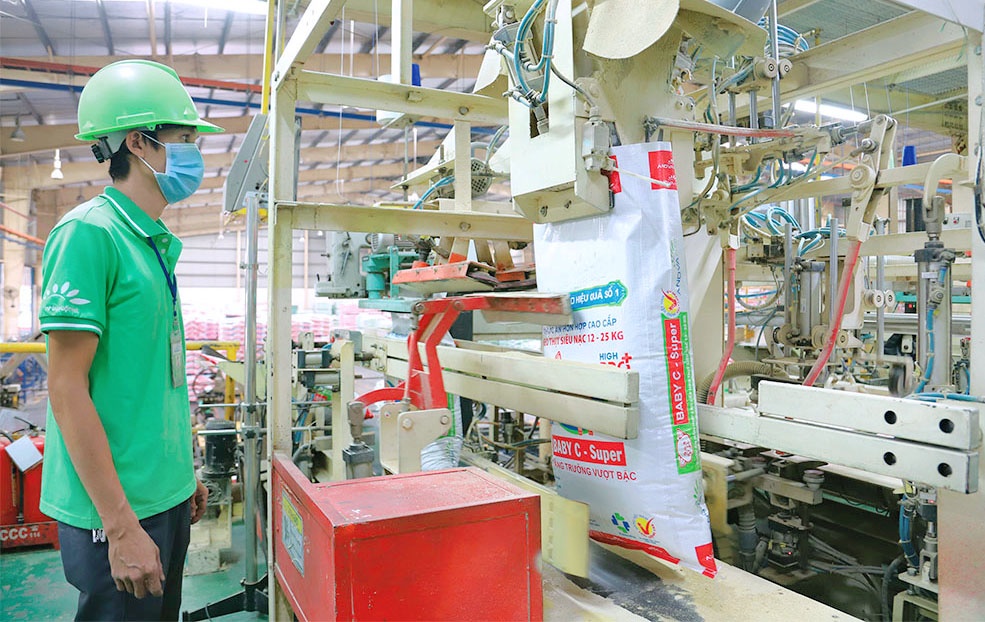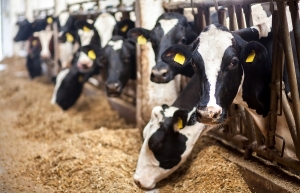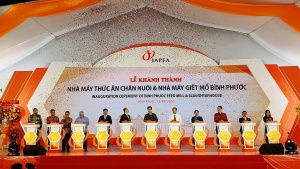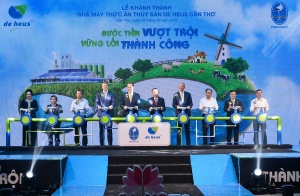Feed firms display sourcing initiative
 |
| Feed firms display sourcing initiative, photo Le Toan |
In mid-December, approval was given to developing the animal feed processing industry towards the end of the decade. The move set up detailed objectives, of which the two important tasks are to ensure industrial animal feed output reaches 24–25 million tonnes in 2025 and 30–32 million tonnes in 2030, and meet at least 70 per cent of the total demand for animal feed in the province.
In addition, Vietnam will expand a portion of agricultural land to produce animal feed ingredients to meet domestic demand and limit imports.
The industrialisation of the production of domestic supplementary foods has several advantages and will provide about 20–25 per cent of demand by 2025 and 30–35 per cent by 2030.
The project will promote the application of advanced technology in processing agricultural, industrial, and food processing by-products, improving use value, and improving economic efficiency.
Focusing on developing the animal feed processing industry is a crucial direction as the price of animal feed shows no signs of cooling as Vietnam depends on imported materials and supply chains from key sources.
The current conflict between the world’s two major wheat and corn producers, and high costs in other major maize-producing countries in South America and Europe due to weather and energy crises, are adding to these pressures.
“The price of ingredients has been a challenging issue for the entire industry, both domestically and globally, in the past two years. Thus, we optimise our products to minimise costs,” said Pham Duc Thang, managing director of Cargill Animal Nutrition for Thailand and Vietnam.
“Regarding ingredients, we select the best-priced raw materials, including those from Vietnam, as long as they meet the nutritional requirements and are produced in Vietnam at a lower cost. The company prioritises the use of these ingredients to optimise cost-effectiveness and support farmers,” Thang added.
In addition, according to Cargill’s forecast, in the Vietnamese poultry and livestock farming industry, about 20 million tonnes of mixed feed will be needed this coming year. To produce that amount of mixed feed, each tonne requires around 20 per cent nutrient components. And those 20 million tonnes will be divided among many feed mills.
However, large farms will mix their feed. It is predicted that each year, the volume of mixed feed will grow by an additional 3-5 per cent, following the growth of economic development. Therefore, the mixed feed market will continue to grow.
“The second demand is for increasingly high-quality products. The requirements for nutrition and technology in the nutrient core are constantly increasing. In the past, mixing trace elements was relatively simple, but as the need for productivity, disease prevention, treatment, and antibiotic replacement has grown, new technologies are required,” Thang said.
The needs of the project to develop the animal feed processing industry towards 2030 are understandable. However, to realise the project’s objectives, there are certain barriers that need to be resolved, especially in the planning of material areas.
According to experts, Vietnam’s yield of corn for grain reached about five tonnes per hectare, not even half of that in other countries such as the United States, Brazil, or Argentina. In addition, maize-growing households also face a barrier relating to growing areas.
Furthermore, experts said the land available for expanding material areas is modest. For example, in mountainous areas, the average farming area of a household is 2-3ha, and the highest area does not exceed 5ha. In the delta, the area was only about 1,000 square metres, leading to difficulties in implementing large-scale production of goods and mechanisation.
Nguyen Nhu Cuong, director of the Crop Production Department under the Ministry of Agriculture and Rural Development (MARD) told VIR, “Vietnam fails to produce sufficient soybeans and peanuts for animal feed processing, then it has to rely on imports. The biggest potential crop is hybrid maize. However, the barrier to expanding the material area is to ensure the competitiveness between maize and other agricultural products, such as rice and fruits.”
“The urgent solution to resolve this barrier is to study and develop the seedlings, which both have high productivity and high nutrition content, in collaboration with the cultivation method,” Cuong said. “The business community also plays an important role in developing the material area via collaborating with the cooperatives to gather land funds from households to avoid the fragmented cultivation.”
In 2024, the MARD will strengthen channels to closely monitor developments in the supply, and price of animal feed ingredients in the country and around the world, take timely measures to minimise the impact on livestock efficiency in the context of high input material prices, and ensure feed quality.
 | Feed producers prepare for self-sufficiency in production As domestic feed producers are pressured by continuously increasing prices for raw materials like corn and soy, local producers are urged to up their game, all while their biggest customers prepare for the busy festive season. |
 | Japfa Vietnam inaugurates animal feed mill and slaughterhouse On May 10, Japfa Comfeed Vietnam Co., Ltd. (Japfa Vietnam) inaugurated its animal feed mill and slaughterhouse located in the Minh Hung Sikico industrial zone, Hon Quan district, Binh Phuoc province in Vietnam. |
 | De Heus opens $20 million aqua feed mill in Can Tho On September 26, De Heus organised the grand opening ceremony of a new aqua feed mill with the total investment capital of over VND500 billion ($20.46 million) at Tra Noc Industrial Zone in the Mekong Delta city of Can Tho. |
What the stars mean:
★ Poor ★ ★ Promising ★★★ Good ★★★★ Very good ★★★★★ Exceptional
Latest News
More News
- Human-centred governance seen as key to AI development (December 19, 2025 | 18:19)
- Top 10 notable events of Vietnam’s industry and trade sector in 2025 (December 19, 2025 | 14:00)
- Tungsten surges to 12-year high as world enters a new 'black gold' race (December 18, 2025 | 17:27)
- Vietnam’s coffee exports set new record despite price pressures (December 18, 2025 | 17:13)
- Garment and textile sector seeks new growth after volatile year (December 18, 2025 | 17:01)
- VinSpeed and Siemens strengthen cooperation for high-speed rail development (December 18, 2025 | 16:53)
- High-tech adoption for TH true MILK (December 18, 2025 | 13:39)
- Takeda supports health resilience amid climate change challenges (December 18, 2025 | 12:39)
- Mondelez Kinh Do - a chapter of purpose-led leadership in Vietnam (December 18, 2025 | 09:44)
- VNPAY services receive the highest-level PCI DSS international security certificates for six consecutive years (December 17, 2025 | 23:47)

 Tag:
Tag:















 Mobile Version
Mobile Version